Paska is an egg bread that is an Easter tradition of many Eastern European countries. Ukrainian Paska is delicious bread with a soft and airy crumb. These intricately braided loaves are proud centerpieces of the Easter dinner table.

This is the Ukrainian Paska, a lovely, soft, sweet Easter bread. I came across this bread a few years back when searching for traditional recipes. Up until then, my collection of Easter bread was restricted to hot cross buns and no cross buns. If you were like me it is time to check out the traditional Eastern European Easter loaves. These are wonderful treats to make year after year!
Paska
Paska means Easter, as far as I can gather. So this refers to the traditional Easter bread from Ukraine, and the nearby regions. It is made for the celebration, taken to the church to be blessed, and later shared by the family. There are variations of this theme in many cultures –the Russian Kulich or the Italian Pane Di Pasqua are two great examples. Here is a lovely article on Ukrainian Easter traditions.
Traditional Paska
Traditional Paska recipes are meant to feed a family – rather a large one by today’s standards. The recipes call for 10, 12, 20 cups of flour. I have pared it down, even then it yields a large loaf. The good news is that this bread keeps well at room temperature for a2 to 3 days and freezes well too. Let us not forget that this is a celebratory bread, in other words, it is meant to be shared. So slice off a piece and pass it on :-).
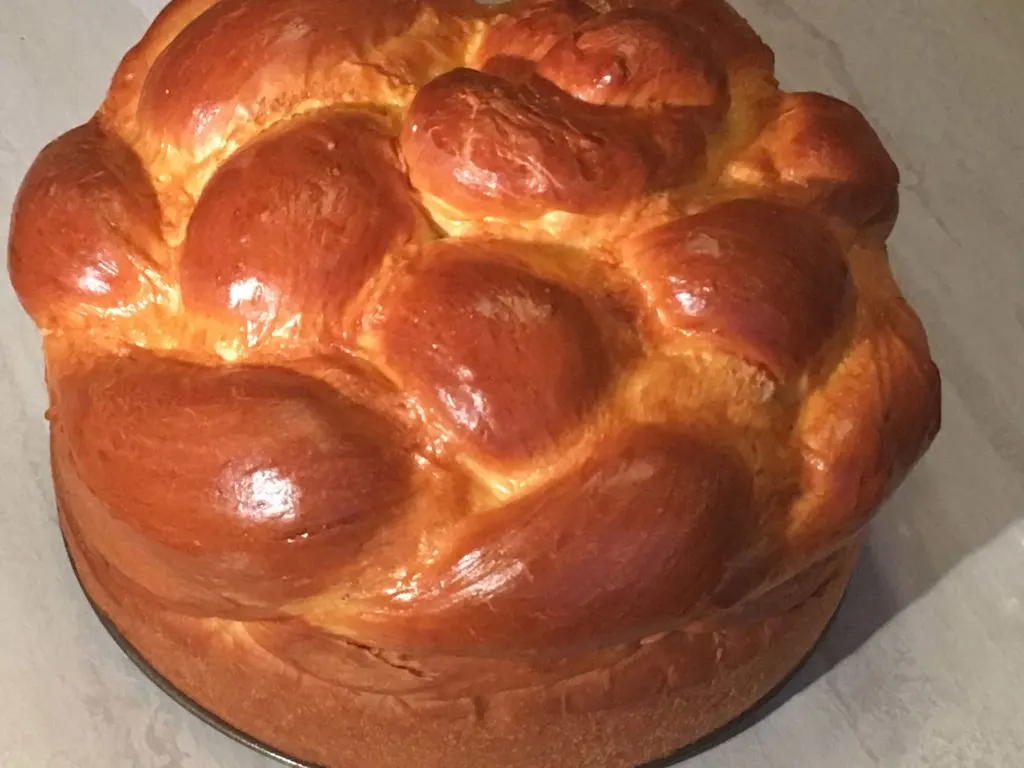
Ingredients for Ukrainian Paska
As I mentioned above this is a pared-down recipe. It is still rich and has a very tender crumb. Being a celebratory bready also means that you use the best ingredients you have. There are optional ingredients – like raisins or vanilla or saffron. You could add these or leave them out. The bread is flavorful as is.
Here is a rundown of the main ingredients.
- Flour: Use bread flour or high protein All-Purpose Flour.
- Yeast: I use Active Dry Yeast in this recipe. This requires activation. If using instant yeast, use the same amount and skip the activation step.
- Eggs: There are 3 eggs in 1 quantity of this recipe, you could optionally add 1 or 2 more yolks. Eggs give it a light yellow color and make the crumb light and airy.
- Milk: Use whole milk if you have. Dairy makes bread taste so much better, so don’t skimp on it.
- Sugar: There is enough sugar to lightly sweeten the loaf. But it does not cross over to the dessert category yet. You could optionally decorate the loaf with coarse sugar as well.
- Butter: Butter keeps the crumb moist and soft. Again use the best quality.
- Salt: Salt is important as it helps strengthen the gluten and is the invisible thread that binds everything together. Without the salt, the bread will not rise as much and the bread will have a rather bland flavor.
- Optional: Raisins, vanilla, saffron, almonds, decorative sugar. I don’t add any as these make it rather sweet.
Making Ukrainian Paska
Here is my version of the Paska recipe. A tribute to the wonderful bakers who passed on these recipes from generation to generation.
Activating Yeast
The bread dough is an enriched sweet dough. The first step is to activate the yeast, as I am using active dry yeast. For instant/rapid rise versions skip this step. Start with warming ¼ to ½ cup of milk to 110°F or just warm to the touch. Dissolve 1 teaspoon sugar in the milk and and sprinkle the yeast on top. Set aside for 5 to 10 minutes until the yeast is bubbly.
Make the Dough
Measure the flour into a large mixing bowl along with salt and sugar. Stir it together and make a well in the center and break the eggs into it. Give it a gentle stir with a spoon or fork to break the eggs. Add the yeast mixture and slowly start kneading by adding the milk. The dough at this point will be wet and sticky.
Once all the flour has moistened keep kneading for 2 more minutes and before adding the softened butter. As you knead the dough develops more gluten and the moisture gets absorbed into the flour resulting in a smooth soft dough. Start kneading in the butter and slowly the dough becomes a little glossy. Keep kneading for 5 minutes or so, If the dough is still very sticky at this point knead in a few more tablespoons of flour.
This is not a very stiff dough, but rather soft and pliable. The extra moisture helps it expand and not dry out in the oven. . This dough did give my arms a good workout. If you have a mixer use it.
If using a mixer add all ingredients to the mixture and start at the stir setting for 1 minute until all the ingredients are mixed. Set the machine to low(or knead or setting 1) and knead for 3 to 5 minutes.low setting. You may need to scrape the sides and help it along.
First Rise
Form the dough into a ball. Oil a bowl and place the dough ball in it. Roll the ball so that all sides of the dough are lightly coated with oil. Cover with a plastic warp or moist kitchen towel and let it rise for an hour until doubled.
Shaping the Ukrainian Paska
Punch down the risen dough. At this point, you have several options to shape. Form into loaves or buns of your choice. The more traditional shaping is that of a decorated round loaf. That is what I have here.
I have used a 9-inch spring form pan (with 2″ sides) here. A 10-inch springform or regular cake pan will work as well, but an 8-inch will be small. You could also use two 8-inch loaf pans, but the shaping is for the circular pans. Whichever you choose lightly oil the bottom and the sides.
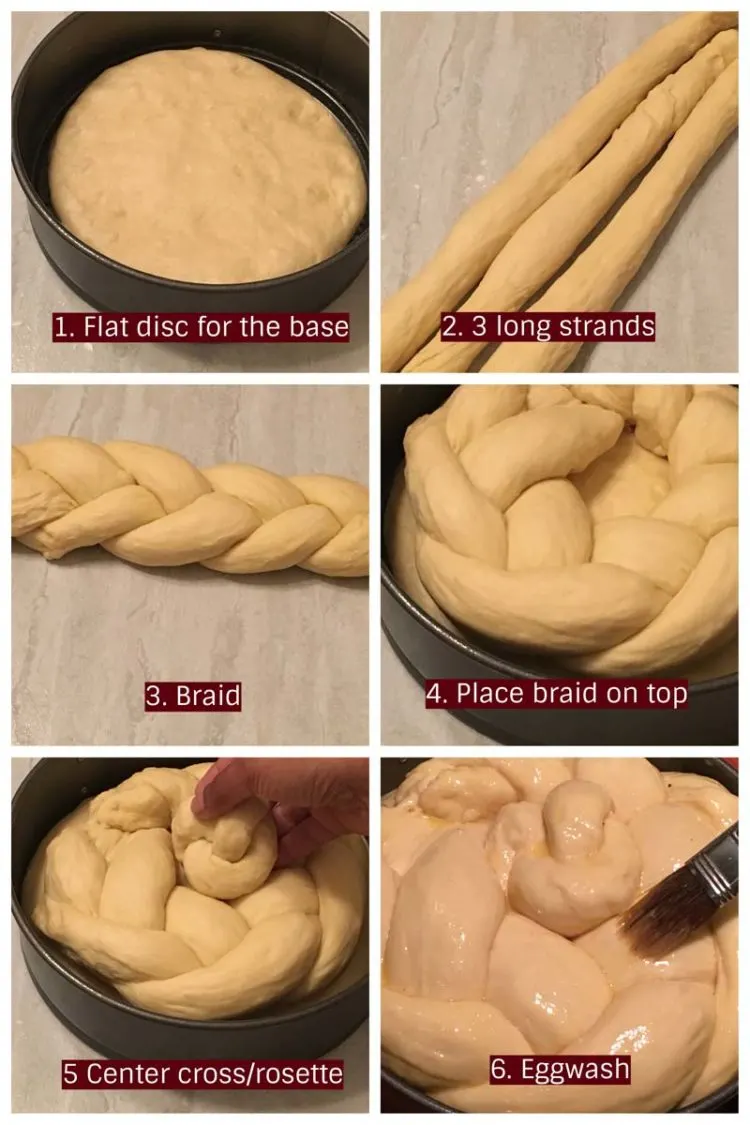
Divide the dough in half and form one half into a disc to fit the pan. Place it in the cake pan. Divide the remaining half into 3 portions and form into long ropes. Create a braid with the ropes and place the braid on top of the disc in the pan. The braid should be a little longer than needed to create an outer circle. Pinch the extra lengths off and create a decorative cross or rosette for the center.
Here I have used the extra dough to create a simple knot. Place it in the center. Do not worry if there are gaps. This dough rises really well and all gaps will fill out beautifully while baking.
Note: For rectangular loaves, make a long brad and cut into pieces and arrange in the shape of a cross on top.
2nd Rise and Bake
Cover and let the dough rise until doubled and peeking out from the top of the springform pan. About 15 minutes into the second rise, preheat the oven to 350°F (175°C). Break an egg and beat with 1 to 2 Tsp water to make an egg wash. Brush the tops of the bread with the egg wash, just before transferring to the oven. This is the time to add coarse sugar as well. Bake for 40 to 50 minutes or until done. The bread is done when the internal temperature reaches 190° F (88°C). A quick way to test is to tap the bottom. When done the bread should sound hollow.
For temperature conversions for different ovens refer to this temperature conversion chart.
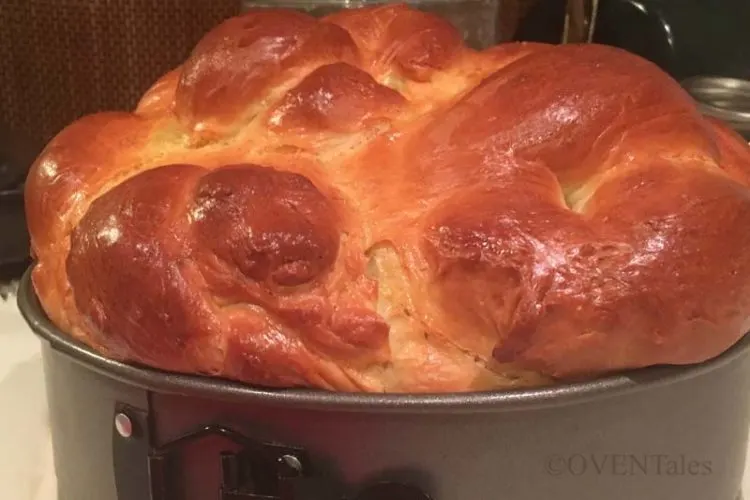
This bread tends to rise really well. If you are working with a small oven you might want to lower the racks. Check the oven at around 30 minutes into baking. If the bread seems to be browning too much, cover the top with aluminum foil and reduce the oven temperature to 325°F(160°C).
Cool the bread in pan for 10 minutes. Remove from the pan and let it cool completely.
Storing
Once cooled wrap well and store in a bread box for 2 to 3 days at room temperature.
The bread freezes well. To freeze slice and store in freezer-safe bags.
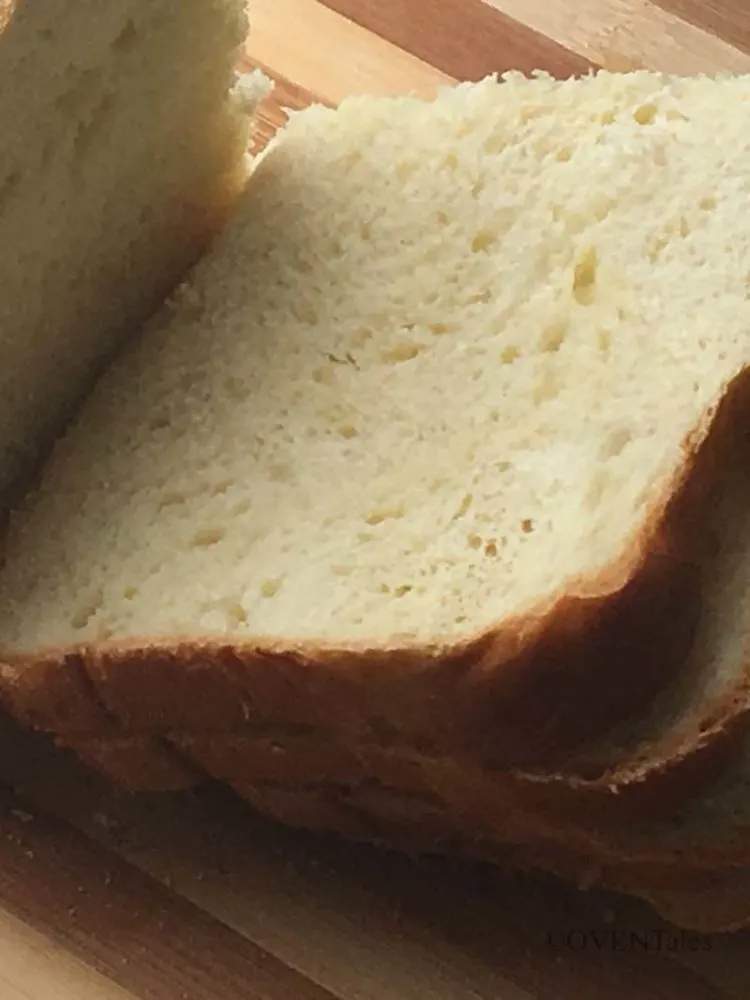
Leftovers
This bread makes great French toast or bread pudding. We love it for breakfast with these preserves
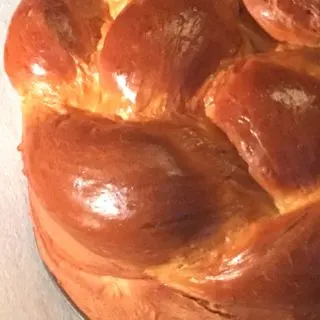
Ukrainian Paska
Equipment
- 9-inch Springform Pan
Ingredients
- 6- 7 C Flour (800g)
- 4 Tsp Active Dry Yeast (7g or 2 pkts)
- 5 Tbsp Sugar (75g)
- 1 1/2 C Milk , Whole or 2% (350g)
- 3 Eggs (Large)
- 1/4 C Butter (50g)
- 2 1/4 Tsp Salt (14g)
Optional
- 1/2 Tsp Vanilla Extract
- 1/2 C Raisins
- Few Strands Saffron
- 2 Tbsp Coarse Sugar
Instructions
Activate the yeast
- Warm the milk to 110°F or just warm to touch. Dissolve 1 tsp of the sugar in 1/2 cup of the milk and sprinkle the yeast on top. Set aside in a warm space for 5 to 10 minutes until the yeast turns bubbly.
Make the dough
- By HandTake the flour in a large mixing bowl, add the salt and sugar and stir well. Make a well in the center and break the eggs into it. Whisk the eggs with a fork to break them up. Add the yeast mix to it and start kneading. Slowly add the remaining milk and keep kneading until all the flour is mixed in. The dough at this point should be wet and a little sticky. Keep kneading for 2 more minutes and add the butter. Knead for another 5 to 7 minutes. The dough should be getting less sticky and smoother at this time. If still sticky add a couple more tablespoons of flour. Knead for 2 to 3 more minutes until the dough feels soft and pliable and a little glossy.
- In MachineAdd the flour, salt, and sugar to the mixing bowl. Fit the kneading hook and set the machine on stir or setting 0. Let it mix for 30 seconds. Add the yeast, eggs, softened butter, milk, and sugar to the bowl. Set the machine to low or setting 1 and knead for about 4 minutes. Scrape the sides of the bowl if needed. By this time the dough should come together in s soft mass. If needed add a few more tablespoons of flour and knead for 1 more minute.
The Fist Rise
- Form the dough into a smooth ball and place it in an oiled bowl. Roll the dough in the bowl once so all sides are lightly coated with oil. Cover and let rise in a warm place until doubled – about 1 hour.
Shape and the Second Rise
- Punch down the dough. Lightly oil the bottom and sides of a 9-inch springform pan. Divide the dough into halves. Form one half into a disc and press into the bottom of the springform pan. Divide the remaining dough into 3 pieces. Form each piece into a rope and create a long 3 strand braid. Place the braid on top of the outer edges of the disc leaving an open area in the middle. Pinch off the extra length from the braid and form into any desired shape and place in the middle. Cover and let rise until almost doubled.
Bake
- Preheat the oven to 350°F(175°C). Beat an egg with 1 tsp water to make an egg wash. Brush the tops of the bread with the egg wash just before baking. Place in the oven and bake for 40 to 50 minutes or until done. Check the bread at around 30 minutes to see whether the tops are browning too rapidly. If so, reduce the temperature to 325°F(160°C) and cover the bread with aluminum foil. The bread is done when the internal temperature reaches 190°F (88°C).
- Remove from the oven and rest in the pan for 10 minutes. Remove from the pan and place on a cooling rack to cool completely.
Optional Additions
- If adding raisins, knead them in by hand towards the end of kneading.
- If using vanilla add it along with milk.
- If using saffron, add it to warmed milk.
- If using coarse sugar to decorate sprinkle it on top of the loaf after brushing the eggwash.
Notes
- Use high protein flour like bread flour or All-Purpose flour with high protein content.
- You can add one or more extra yolks to give the loaf a more golden color.
- Alternately use two 8-inch or 9 inch loaf pans
- When changing pans the baking times will change, check at 30 minutes and adjust temperature and time if needed.
- For more details on adjusting temperature and time refer to the bake section of the post.
Important: Nutrition Values are estimates. Actuals vary based on ingredients and serving size.
In a bread making mood ? try out these other Easter favorites !
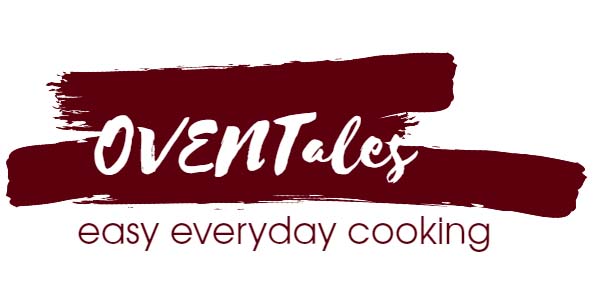

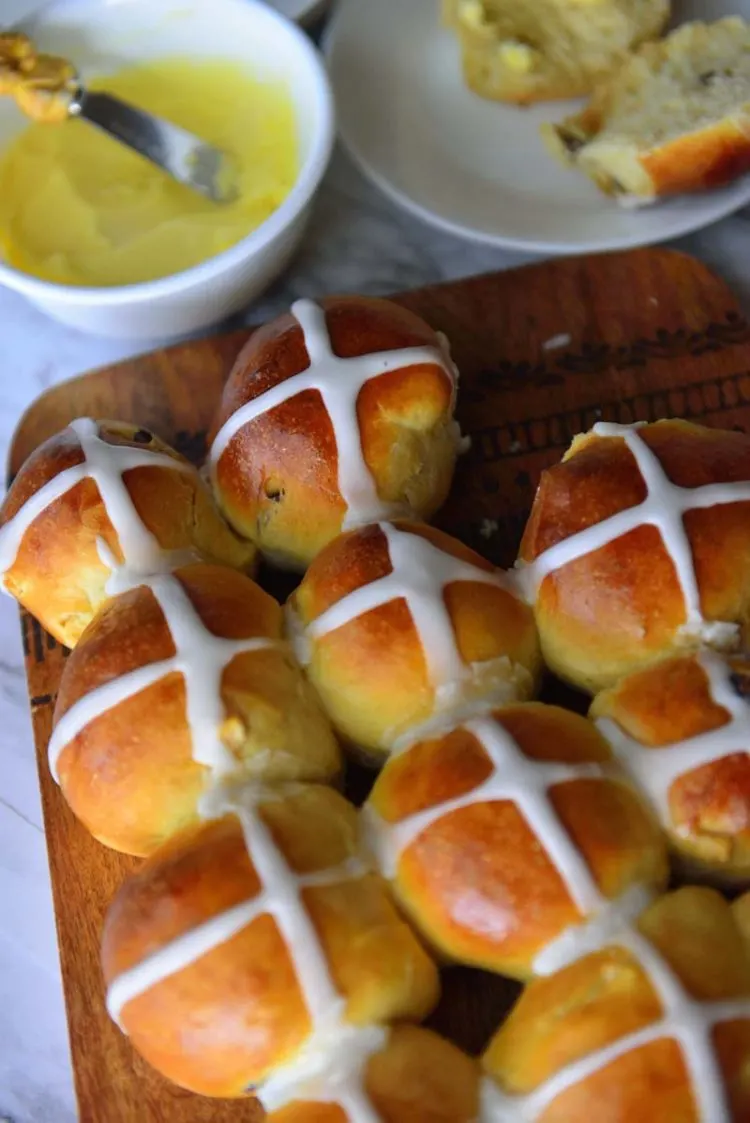
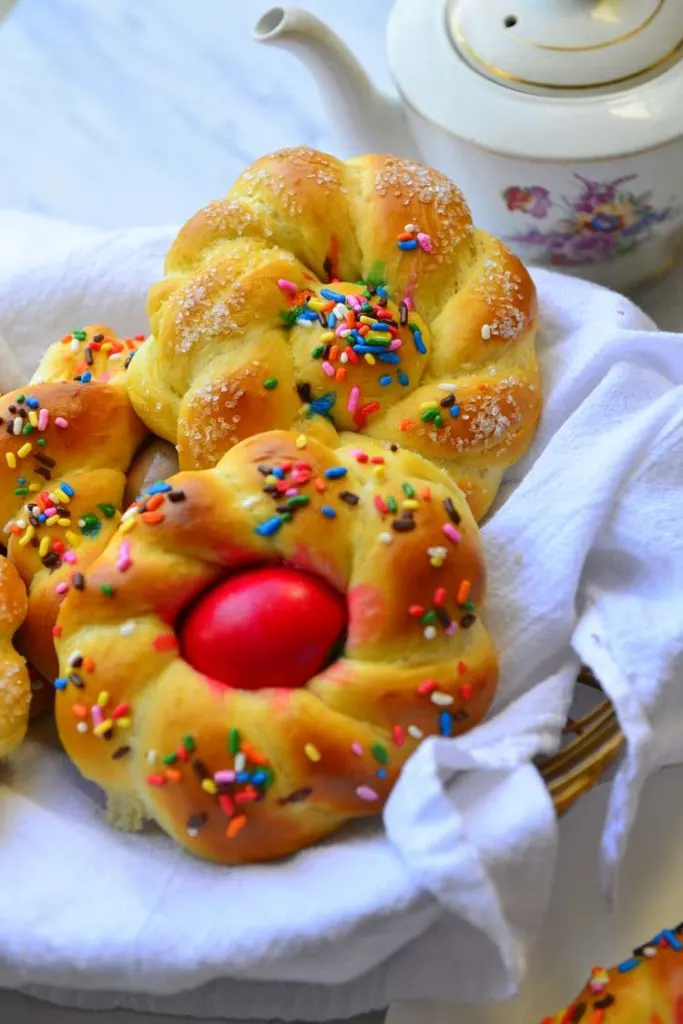
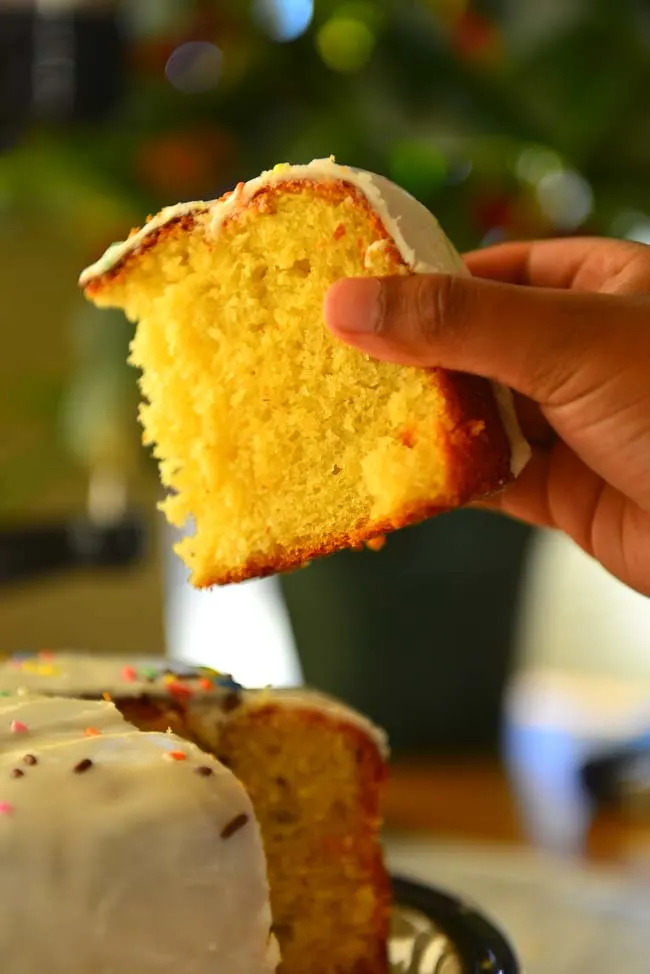
Kelly Patrick
Monday 25th of April 2022
This Paska recipe came out perfectly. I usually bake them in cans, but wanted a fancier one this year. Your recipe was - thankfully - detailed and was followed to the letter!
Betty Knapik
Wednesday 9th of March 2022
Very excited to make for Easter. As you should share this, I will give it to my neighbor who will attend a large gathering. I will ask that they save me a slice so I can try it. (Too much for 2 people) Only have a 10" springform, so that should work well to leave some for us! Thank you so much and Happy Easter! Prayers for Ukrainians everywhere.
Sharon
Saturday 16th of April 2022
@Betty Knapik, my mother in law used to make a bread like this at Easter with a dry crumbly ricotta topping, just a bit. I ve been unable to find any recipe that is similar .. have you heard of this
Christine sellers
Saturday 25th of April 2020
I use to make this with my mom Time and effete was worth it and all memories came flooding back.
Syama
Sunday 26th of April 2020
You made my day :-) Missing my gran today - though she wasn't a baker. Shared memories seem extra sweet in this quarantine world.
Elaine
Saturday 11th of April 2020
Did you ever add raisins or candied fruit to this dough?
Syama
Saturday 11th of April 2020
Hi Elaine, No I haven't, but it can definitely be done. Punch down the dough after the first rise and add he dry fruits and knead a few times to incorporate it. Enjoy your bake! - Syama p.s Please don't forget to tag me if you post your pictures.